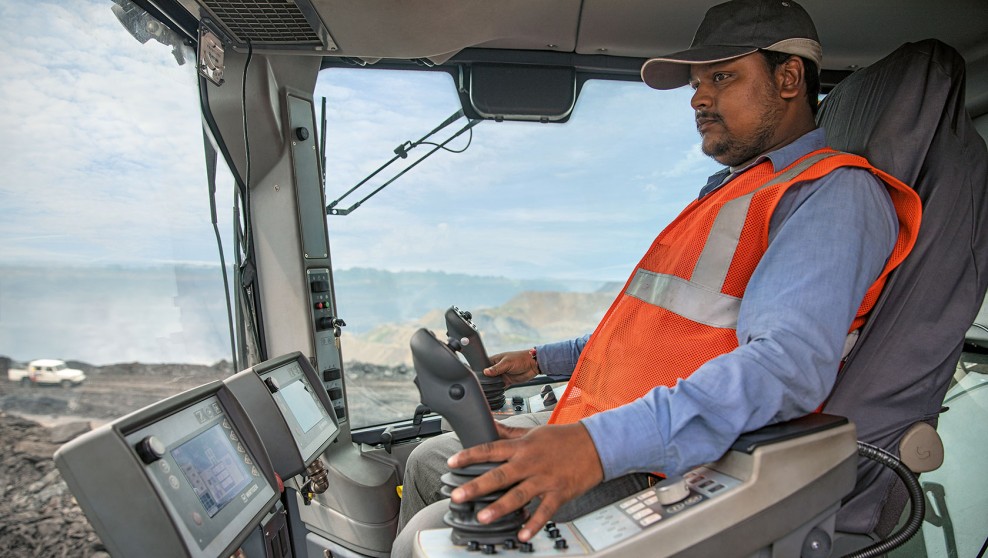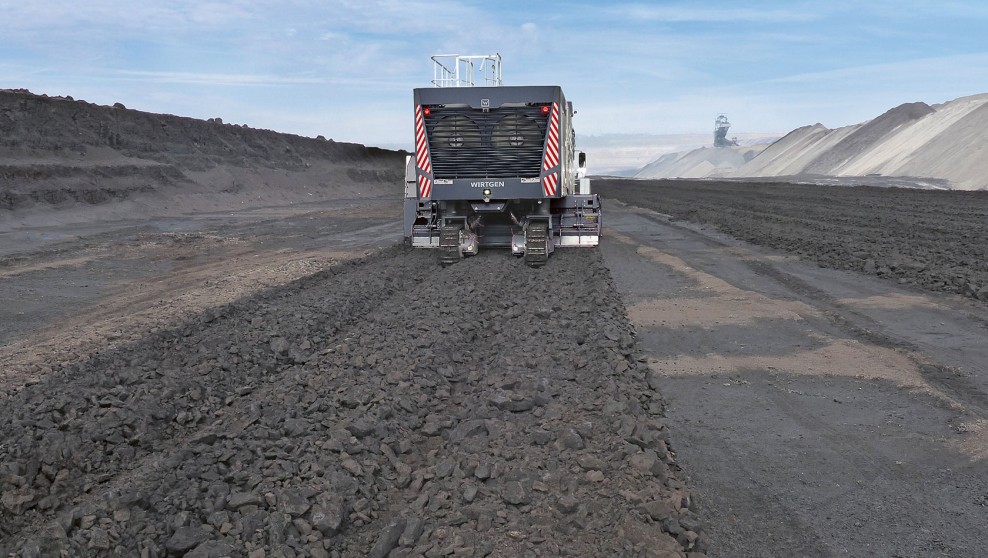Safe, 24/7 Operations
Mining operations at the Bhubaneswari coal mine are conducted 24 hours a day to permanently supply the nearby coal-fired power plants with the raw materials they need to generate electricity. As a result, the company mines more than 25 million tons of coal annually with a uniaxial compressive strength of up to 35 MPa. At the open-cast mine, the company completely refrains from blasting and drilling – instead, BCML relies on the safe method of cutting the soft rock. Bairagi Sahu, Associated Vice President BCML, is highly satisfied with the 7 machines: “When it comes to performance, the Wirtgen surface miners are simply the best on the market. At our mine, we sometimes cut up to 1,800 tons of coal per hour with one surface miner.”
In addition, eliminating the need for drilling and blasting and instead using surface mining technology results in a number of other benefits. First of all, it increases the safety of open-cast mining by eliminating the need to store and handle explosives. Enhanced slope stability and therefore less rockfall also contribute to greater safety. Surface miner technology also eliminates the need to close the mine for blasting, which delays production. In addition, mine operators no longer need to spend time obtaining the required permits, hiring certified blasters, or compiling the associated documentation.
Optimized Exploitation of Deposits
Mining with Wirtgen surface miners also offers considerable financial benefits. The flat surfaces created during the mining process serve as stable roadways that facilitate fast truck haulage. This increases the transport capacity of the entire truck fleet, and the quality of the road surface even reduces wear and tear to each truck’s tires, frame, and suspension, allowing the operators to use standard trucks. The resulting reduction in transport costs helps mining companies lower production costs per ton of material.
In contrast to drilling and blasting, the use of surface miners makes mining vibration-free and significantly reduces noise and dust emissions. As a result, the material can be mined close to industrial sites and other infrastructure facilities such as pipelines, railroad tracks, or high-voltage lines that cannot be exposed to vibrations. This improves the exploitation of the deposit and with it, the overburden-to-coal ratio, allowing the operator to generate additional revenues.





